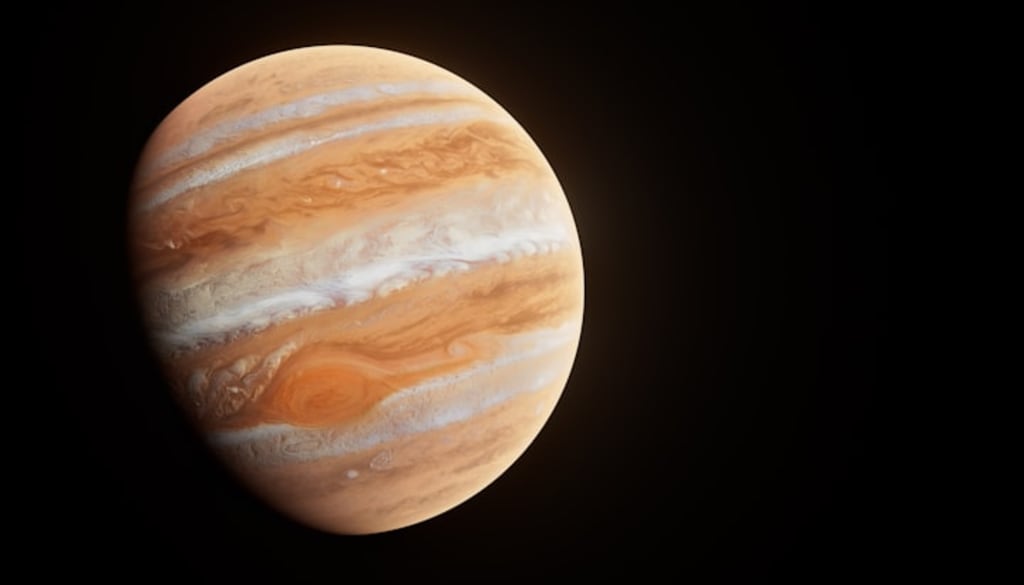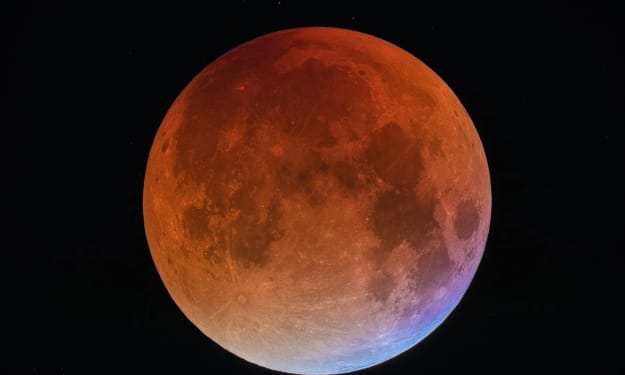Jupiter
Jupiter is the fifth planet from the Sun and the largest planet in the Solar System. It is a gas giant with a mass one thousandth that of the Sun but two and a half times the total mass of all the other planets in the Solar System combined.

Jupiter, the fifth planet from the Sun and the largest in our solar system, has long fascinated astronomers and scientists. Known for its massive size, distinctive bands, and iconic Great Red Spot, Jupiter is a gas giant with a complex and dynamic system. This essay explores Jupiter's physical characteristics, atmospheric conditions, moons, and the significant scientific missions that have enhanced our understanding of this majestic planet.
**Jupiter: The Giant Among Planets**
Jupiter is a colossal planet with a diameter of about 142,984 kilometers, more than 11 times that of Earth. It has a mass approximately 318 times that of our planet, making it more massive than all the other planets in the solar system combined. Despite its size, Jupiter has a relatively low density because it is composed primarily of hydrogen and helium, similar to the Sun.
The planet's rapid rotation, completing one rotation in just under 10 hours, gives it an oblate shape, with a noticeable bulge around the equator. This fast rotation also contributes to the dynamic and turbulent nature of Jupiter's atmosphere.
**Atmospheric Dynamics**
Jupiter's atmosphere is characterized by its colorful bands and swirling storms. The bands are made up of ammonia clouds and are divided into zones (lighter bands) and belts (darker bands). These bands are created by strong east-west winds that can reach speeds of up to 640 kilometers per hour (400 miles per hour). The contrasting colors are due to differences in temperature, composition, and the height of the clouds.
One of the most prominent features of Jupiter's atmosphere is the Great Red Spot, a gigantic storm that has been raging for at least 400 years. This anticyclonic storm is larger than Earth and has wind speeds of about 432 kilometers per hour (268 miles per hour). The Great Red Spot's persistence and size make it a key focus of study for understanding atmospheric dynamics on Jupiter and other gas giants.
In addition to the Great Red Spot, Jupiter's atmosphere hosts numerous smaller storms and vortices. The planet also exhibits auroras near its poles, caused by the interaction of its strong magnetic field with the solar wind. These auroras are similar to those seen on Earth but are much more powerful and dynamic.
**Moons and Rings**
Jupiter has a diverse system of moons, with 79 confirmed natural satellites. The four largest moons, known as the Galilean moons, were discovered by Galileo Galilei in 1610 and are among the most intriguing objects in the solar system. These moons—Io, Europa, Ganymede, and Callisto—each have unique characteristics and have been the focus of extensive study.
- **Io** is the most volcanically active body in the solar system, with hundreds of volcanoes spewing sulfur and sulfur dioxide.
- **Europa** has a smooth, icy surface with evidence of a subsurface ocean, making it a prime candidate for the search for extraterrestrial life.
- **Ganymede** is the largest moon in the solar system, even larger than the planet Mercury, and has a magnetic field.
- **Callisto** is heavily cratered and has a relatively old surface, providing insights into the early solar system.
Jupiter also has a faint ring system, composed mainly of dust particles from its moons. These rings are not as prominent as those of Saturn but still contribute to the planet's overall structure.
**Scientific Missions and Discoveries**
The exploration of Jupiter has been significantly advanced by numerous space missions. Pioneer 10 and Pioneer 11 were the first spacecraft to fly by Jupiter in the early 1970s, providing initial close-up images and data. The Voyager 1 and Voyager 2 missions followed in 1979, capturing detailed images of the planet's atmosphere, rings, and moons.
In 1995, NASA's Galileo orbiter arrived at Jupiter, becoming the first spacecraft to orbit the planet. Galileo made numerous groundbreaking discoveries, including evidence of subsurface oceans on Europa and the intense volcanic activity on Io.
More recently, NASA's Juno mission, which entered orbit around Jupiter in 2016, has provided unprecedented insights into the planet's interior structure, gravity field, magnetic field, and atmosphere. Juno's highly elliptical orbit allows it to get closer to Jupiter than any previous spacecraft, revealing new details about the planet's composition and dynamics.
Future missions, such as the European Space Agency's JUICE (JUpiter ICy moons Explorer) and NASA's Europa Clipper, aim to further explore Jupiter and its moons, particularly focusing on the potential habitability of Europa's subsurface ocean.
**Conclusion**
Jupiter, with its immense size, dynamic atmosphere, and intriguing moons, continues to be a focal point of planetary science. Its complex system offers valuable insights into the formation and evolution of our solar system. The ongoing and future missions to Jupiter promise to deepen our understanding of this giant planet and its diverse components, bringing us closer to unraveling the mysteries of the cosmos. As we explore Jupiter, we not only learn more about this majestic planet but also gain a broader perspective on the nature of planetary systems and the potential for life beyond Earth.
About the Creator
Enjoyed the story? Support the Creator.
Subscribe for free to receive all their stories in your feed. You could also pledge your support or give them a one-off tip, letting them know you appreciate their work.





Comments
There are no comments for this story
Be the first to respond and start the conversation.